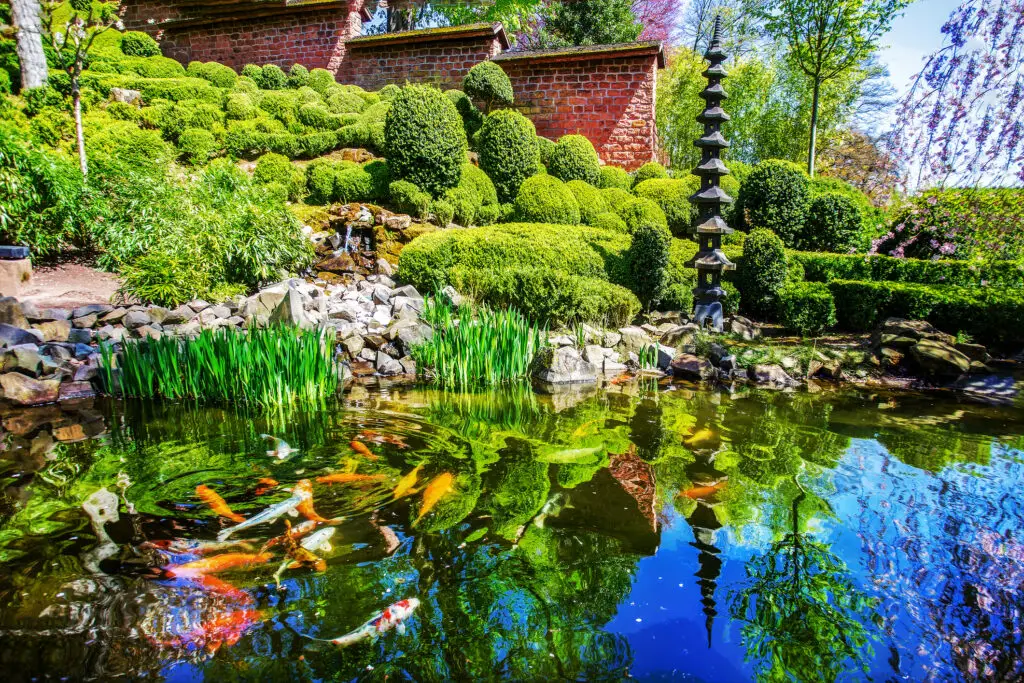
Building your own koi pond is a fascinating hobby. It grants a delicate aesthetic to your garden to relax and meditate at your leisure. But what are the specifics when you want to install a koi pond? Can the koi pond be too deep or too shallow?
A koi pond should be no shallower than two feet. The most appropriate depth is three feet. The sides should be straight down to prevent predators from catching your koi and for the koi from jumping out. A koi pond should also not exceed a depth of ten feet to avoid anaerobic digestion.
Having the ideal depth for the number of koi fish you intend to have is tricky. However, there are basic rules you can follow to make sure your koi fish are healthy, happy, and content in their environment.
Pro Tip: If you’re tired of wasting money and making costly mistakes on the koi-keeping hobby or are thinking about buying koi fish but don’t know where to start, I strongly suggest you check out this ebook. I recently read this ebook, and it contains SO much useful information, such as:
- 3 proven steps to identify koi fish diseases
- WARNING: 3 things you should NEVER do when it comes to caring for koi
- When to seek professional help when it comes to looking after your koi
How Deep Can A Koi Pond Be?
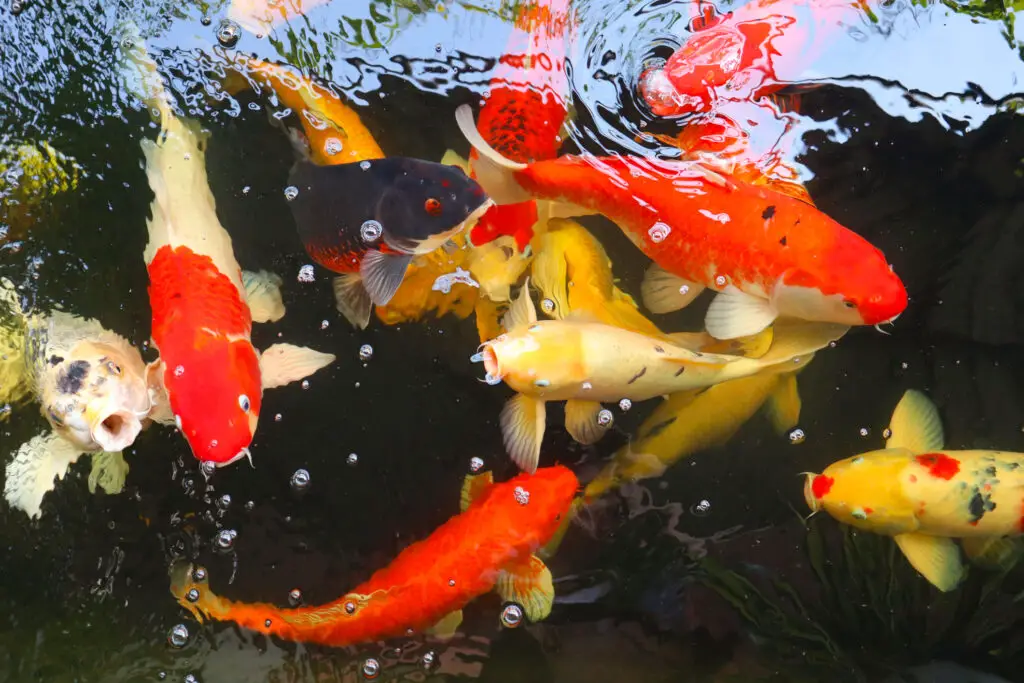
A koi pond is a controlled ecosystem. The pond should not be deeper than ten feet. The deeper they get, the less likely it will be to maintain a healthy environment for your koi. Excess food falls to the bottom and decomposes to release harmful gasses. The surplus carbon dioxide and the deteriorating waste discharges could cause fatal illness among your fish.
It also becomes more challenging to care for your koi if they like to swim so deep since they tend not to surface during feeding times. Not to mention that we keep our koi to admire their beauty, and it’s much more strenuous to see them if they remain at the bottom of the pond.
What Is The Minimum Depth Of A Koi Pond?
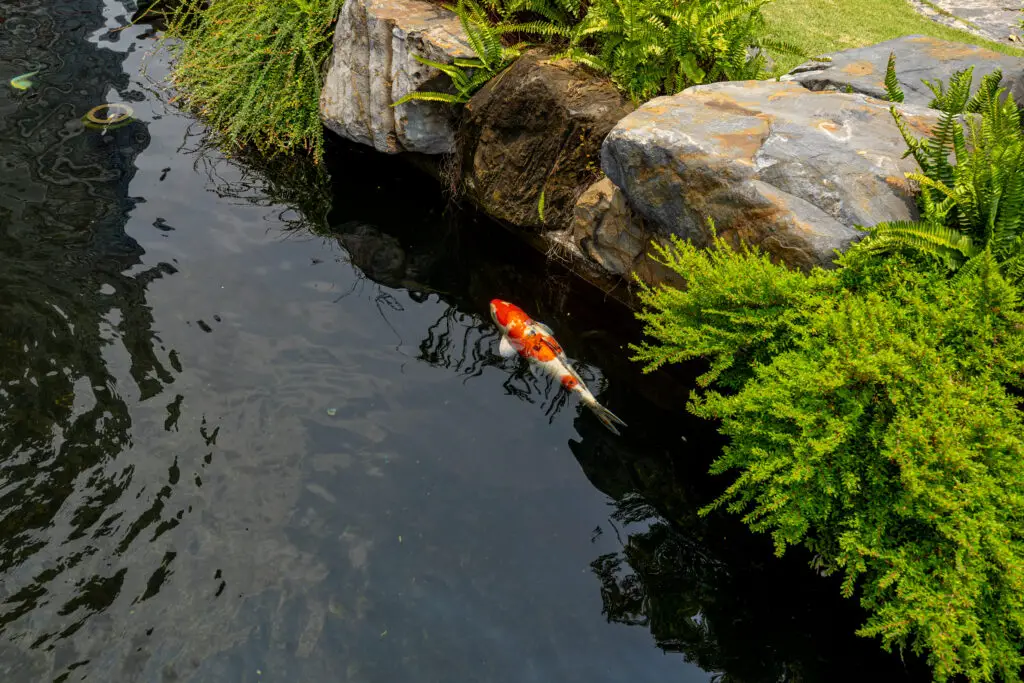
You should ensure that your koi pond never goes below at least two feet of water. The most crucial factor affected by the depth of your pond is the increasing likelihood of predators catching your fish if there are no protective measures put in place. Ideally, a koi pond should be three feet at its lowest point without an incline at the edges.
What Are The Risks Of A Too-Deep Koi Pond?
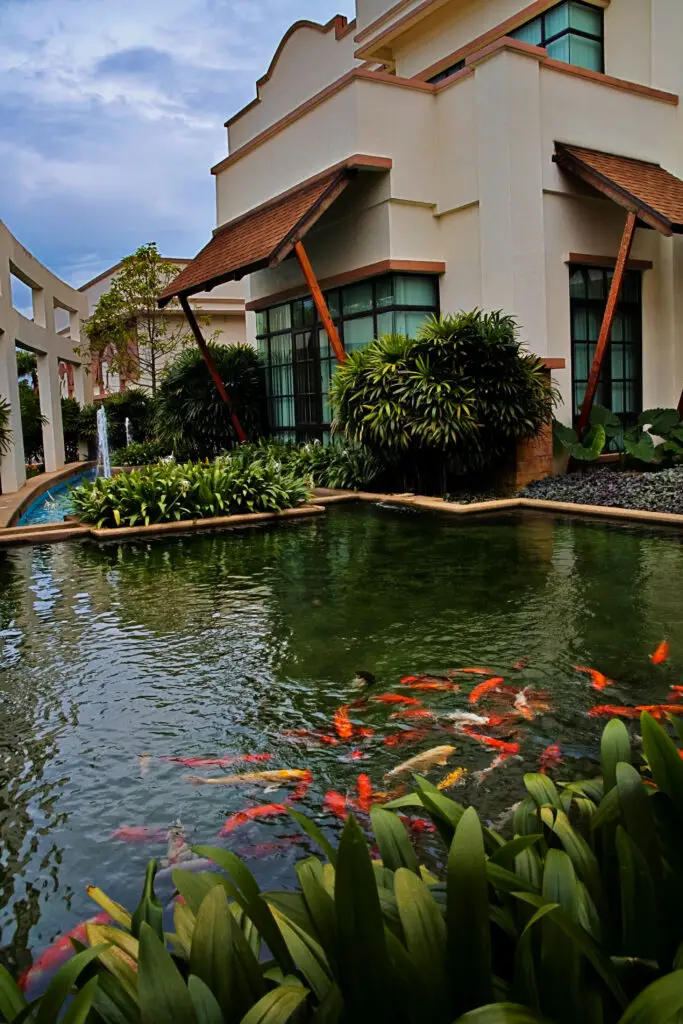
Of course, there is a risk of designing your pond too deep. A koi pond should not surpass a depth of nine to ten feet. Apart from the fact that your colorful koi fish will be less visible, debris and leftover food will fall to the bottom and create anaerobic digestion. These excretions will release harmful gasses that can make your koi fish very sick and decrease the oxygen levels in your pond.
Maintaining a pond with a depth exceeding ten feet also becomes very problematic. Increasing the depth by building hidden caverns in your pond for your koi to gain cover from predators causes you to lose control over their well-being. You will lose sight of them and be unable to check up on their health. It will be vital for you to invest more time and more potent filtration equipment to control the most favorable water levels for the health of your koi.
What Are The Risks If The Pond Is Too Shallow?
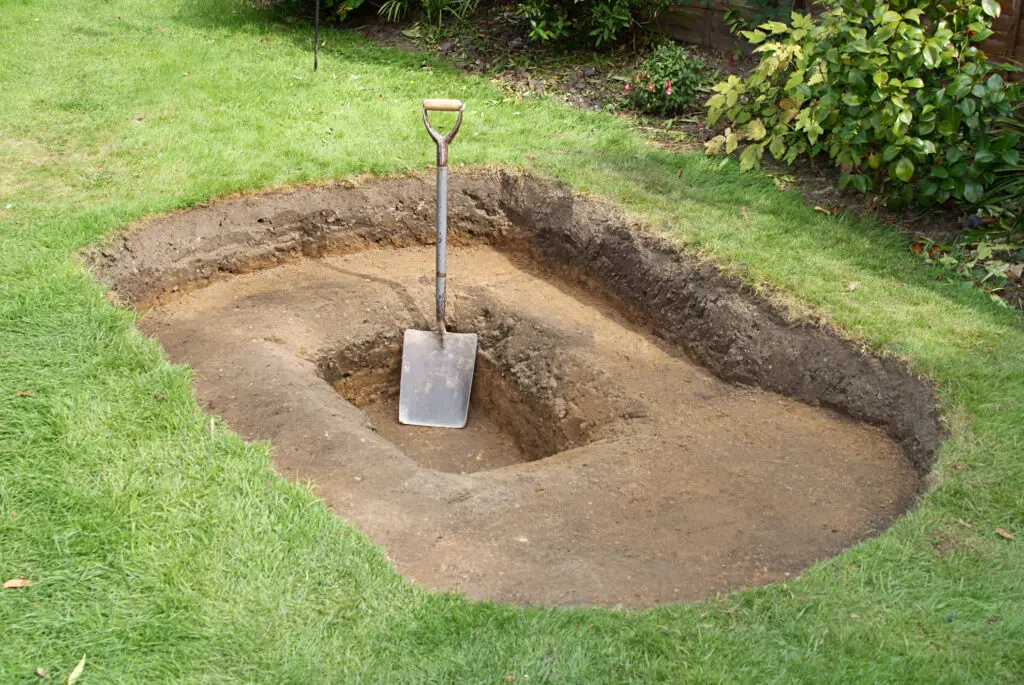
If your pond is too shallow, your koi fish could fall prey to several predators readily found throughout North America. Raccoons and foxes are very fond of koi fish and are not too shy to invite themselves to your pond. Herons are another predator with tall legs and a long beak that likes to hunt shallow waters.
In regions where below-freezing temperatures are recorded, your koi pond will freeze over and become too cold for your koi. During colder months, your koi fish will remain near the bottom of the pond to ensure their survival. Even though they can survive in frigid waters, they might freeze too or perish without enough oxygen if they are too shallow.
Another unfortunate consequence of a pond that is not deep enough is that your koi might grow too big. The lack of space and swimming room can be stressful for the koi. Apart from stress-related diseases and illnesses, they might start nipping and hacking at each other in their competition for space. Eventually, your koi will try to jump out of your pond due to the aggravating circumstances.
How To Know What Is The Ideal Pond Depth
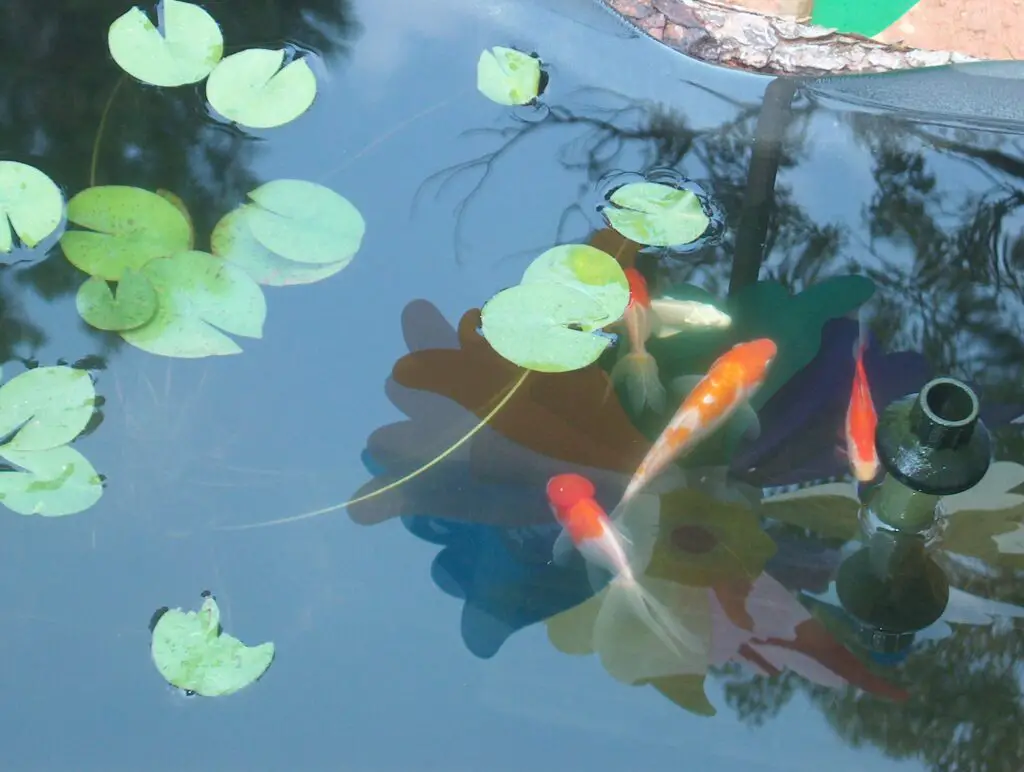
Koi fish are active fish that like to exercise. Before deciding how big your pond will be, you should decide how many koi you wish to have. If a pond is too shallow and overpopulated, the fish will have difficulty coping and growing. Depending on the size of your entire pond, the ideal depth for a koi pond should be a minimum of about three feet.
Planning the pond is essential when you have a general idea of how many koi you would like to keep. If the koi pond is too deep, inadequate oxygen and sunlight will reach the bottom, which can impact the health of the fish with detrimental effects. It would be best if you calculated the depth to the length of the pond at a ratio of one to two. Your koi pond should be twice as long as it is deep.
What Are The Benefits Of A Pond At The Right Depth?
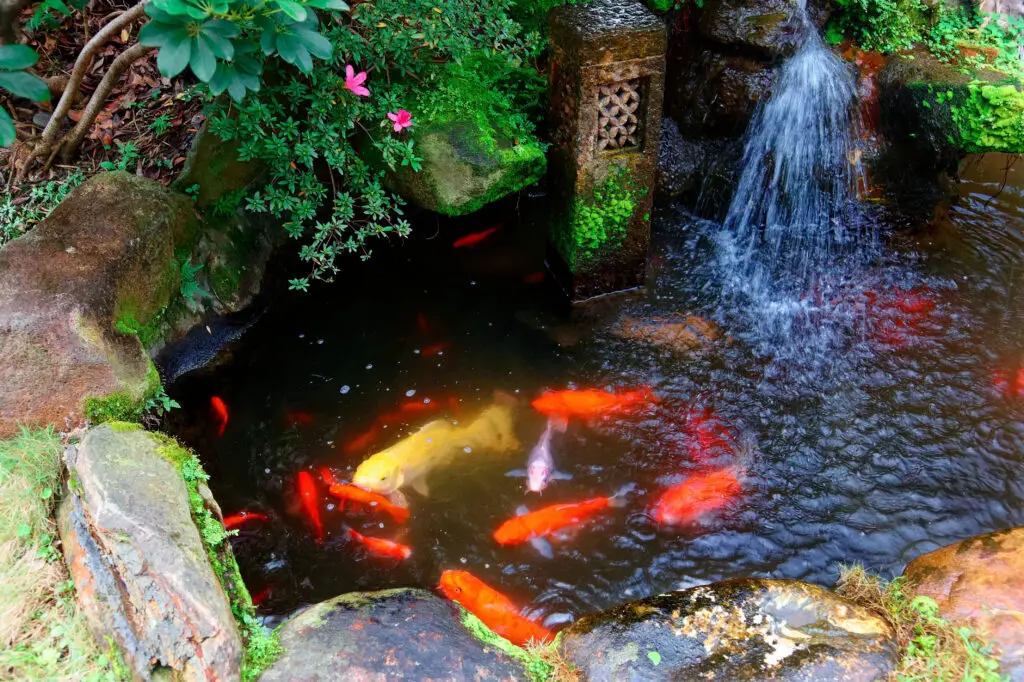
You can create optimal pond conditions with the proper maintenance. The most habitable environment for your koi fish is installing a pond between four and seven feet. Preventing bacterial growth near the bottom becomes challenging if the water gets too deep, with less solar energy and oxygen.
With a slightly deeper pond than three feet, the depth of the water assists in keeping the koi cooler in the hot summer months. During icy winter months, they maintain their temperature and hibernate below the ice where the water doesn’t freeze.
What Is The Edge Around The Pond Called?
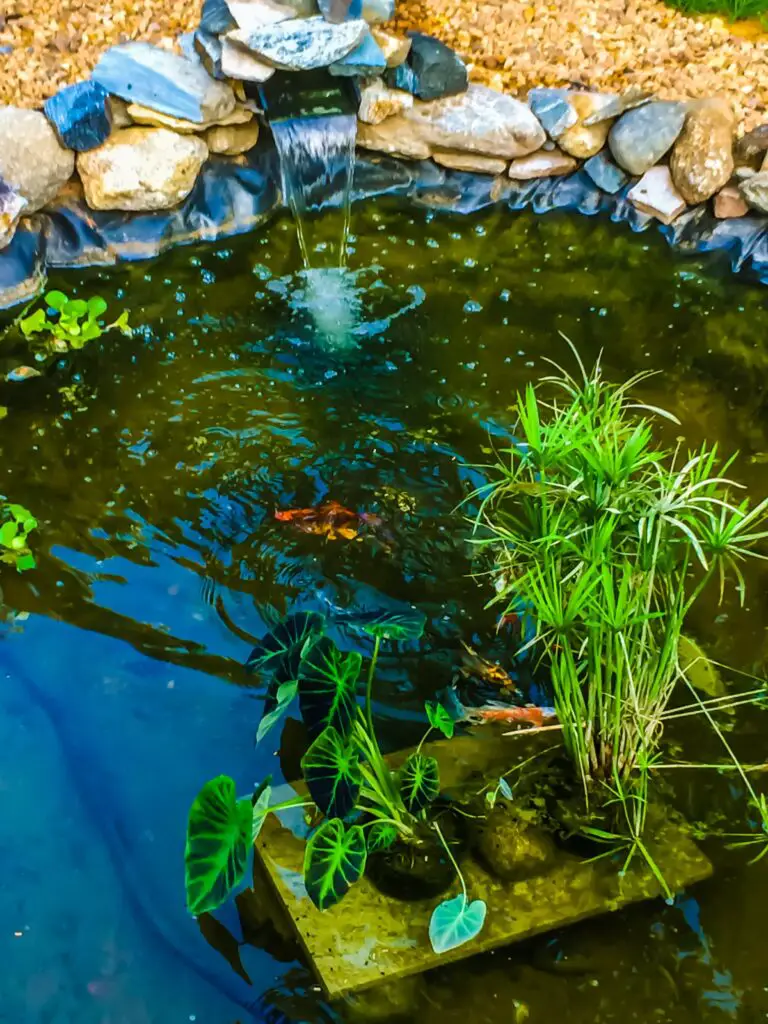
The shore of your koi pond plays a vital role in the health and safety of your koi. The edges should not have shallow ends with a gradual decline into the pool because this invites, first and foremost, a variety of predators. Another deficit, if there is an incline in the shore, is that your fish might accidentally jump out since they like to swim the length of the pond for exercise. For a more beauteous advancement in the final picture, you can decorate the edge of your koi pond with aquatic plants, rock formations, and waterfalls.
How Many Koi Fish Can You Have In Your Pond?
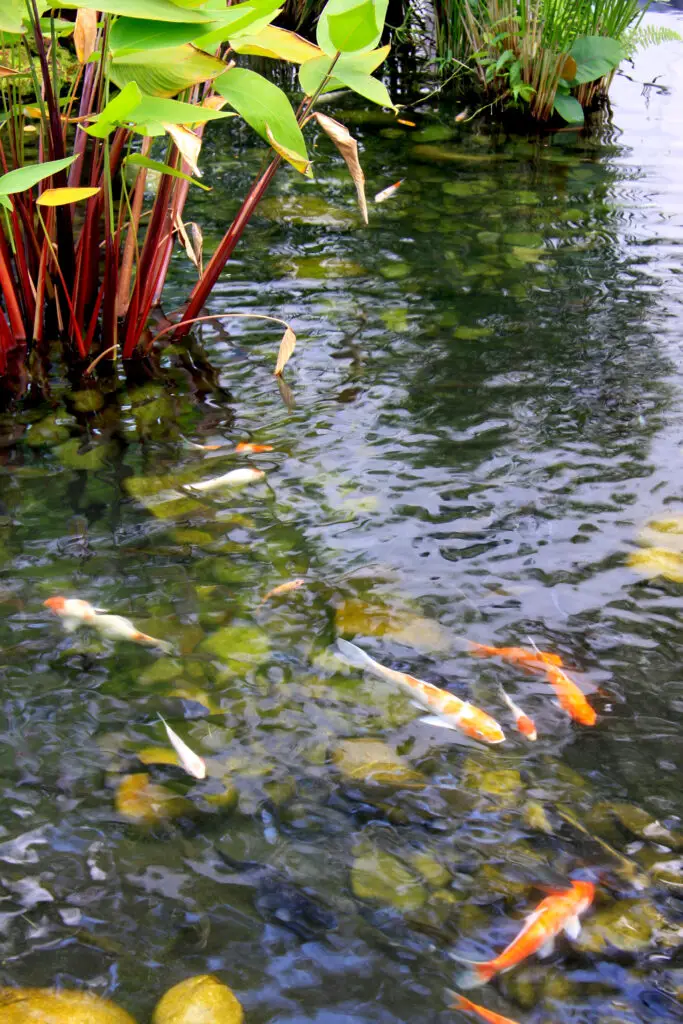
Keeping in mind that your koi might grow between eighteen to thirty inches long, you shouldn’t overstock your koi pond. When small, thirty small koi can easily survive in a 1500-gallon pond. However, when they reach their adult length, the space will be insufficient for those fish in three years. The experts generally stick to one koi for every 250 gallons of water. Alternatively, ten gallons for each inch of fish.
What Does The Volume Of Water In My Koi Pond Mean?
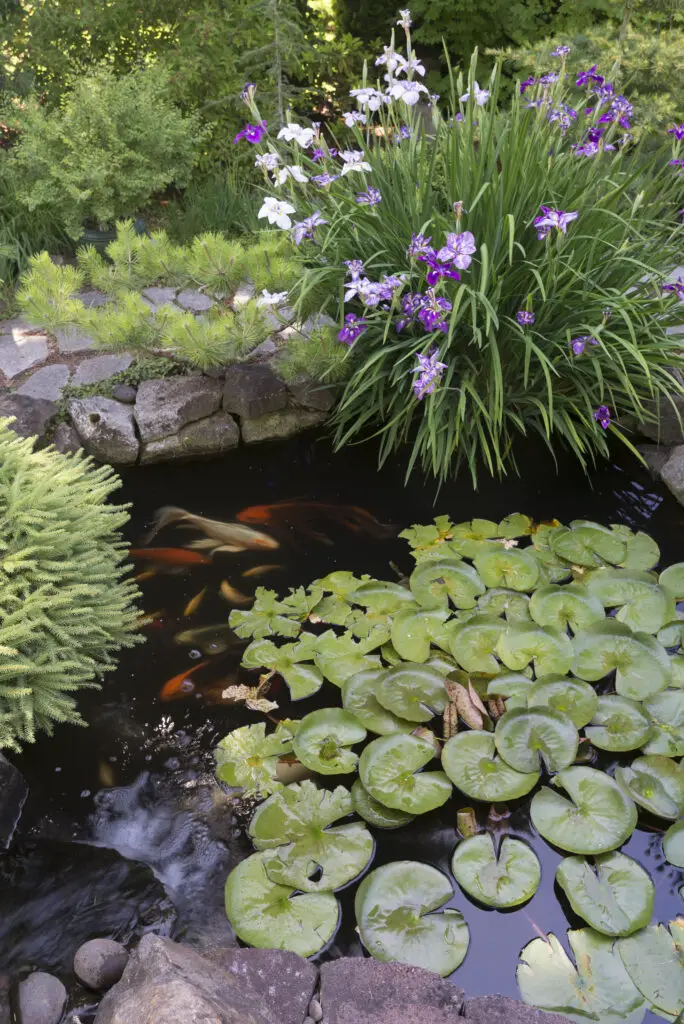
Knowing the volume of water your intended pond will hold will assist you in numerous ways. For one, it will allow you to calculate how many koi you’ll be able to house in your pond. Another reason is that you need to acquire the correct strength filtration system. The entire body of water needs to filter through the system in an hour.
To calculate an estimate of how much the volume of water will be to fill your koi pond, you can follow the below methods.
- For a rectangular or square pond, you may use the following formula:
- Length (ft) X Width (ft) X Depth (ft) = volume (cubic feet)
- Volume X 7.48 = Gallons
- Or for a circular pond, the following formula applies:
- (3.14 X Radius (ft) X Radius (ft)) X depth = Volume (cubic feet)
- Volume X 7.48 = Gallons
How To Protect Your Koi Pond Against Predators?
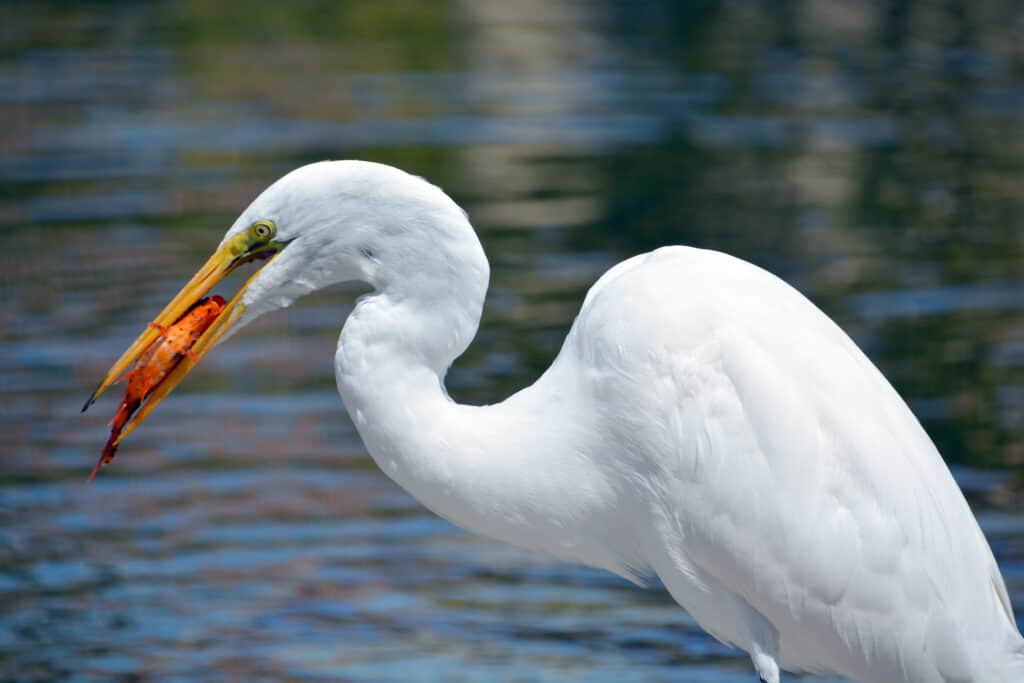
Predators can venture into your serene koi garden and steal your fish regardless of how deep your pond is. Some of the measures might sound drastic and will minimize the overall beauty of the grand picture, but in some cases, they are necessary to avoid losing your costly pets.
- Installing an invisible floating mesh will prevent hunters from snatching your fish and usually is not noticeable from far away.
- Various electrical gadgets are available to fend off animals like birds and raccoons. Ultrasonic devices or automated contraptions that squirt water could effectively defend your koi pond.
- It would be helpful to install underwater mesh cages to provide a haven for the fish when dangerous animals are nearby.
- As part of the natural ecosystem, you can install plant-based barriers like vegetation or rocks. Besides their decorative ability, they obstruct animals from reaching your koi pond.
- Some of the most dangerous predators are invisible creatures like parasites and bacteria that can cause fish diseases. To avoid unexplainable death in your koi pond, install adequate filtration systems to maintain healthy water conditions.
Does The Depth Of Your Pond Impact The Growth Of Your Koi Fish?
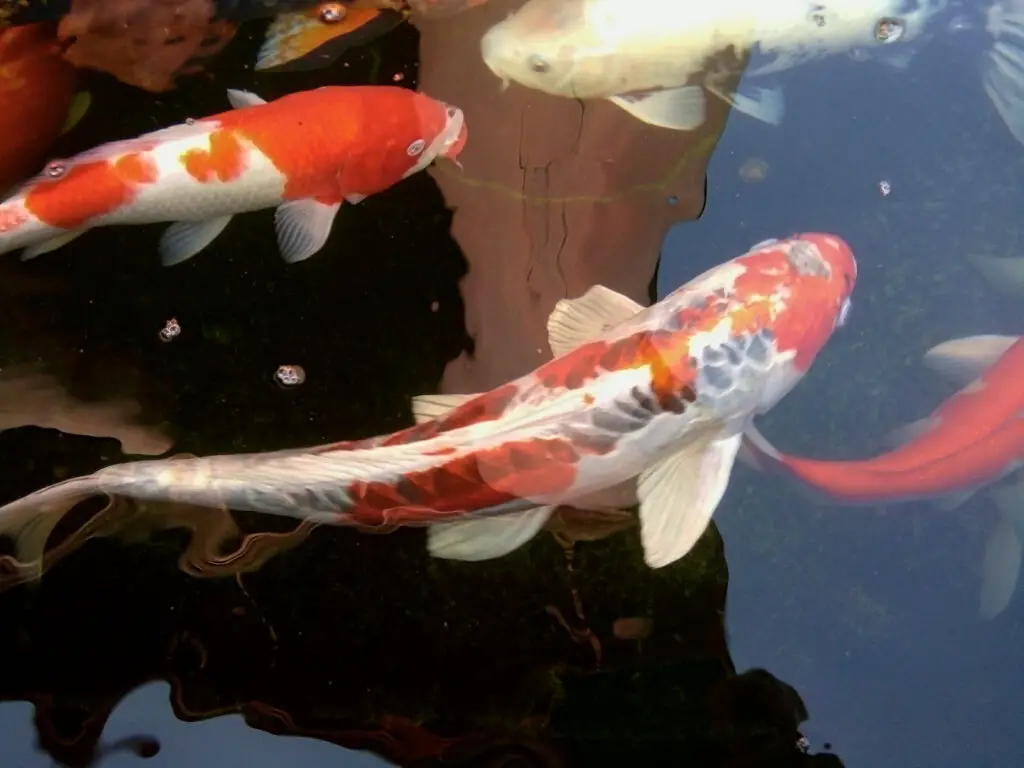
The growth rate of your koi fish and the depth and volume of your pond are intrinsically connected. Having plenty of young 15-inch koi in a 1000-gallon pond is much prettier than a massive pond with ten tiny koi swimming around.
But with enough time, this large school of koi will grow into adult koi fish between 34 – 36 inches long and compete for space to swim. If they have room to grow and move, their growth will likely not be stunted. You must calculate the size of your pond correctly for an optimal aquatic ecosystem that will not hinder the koi’s growth.
6 Reasons Why Your Koi Fish Are Not Growing
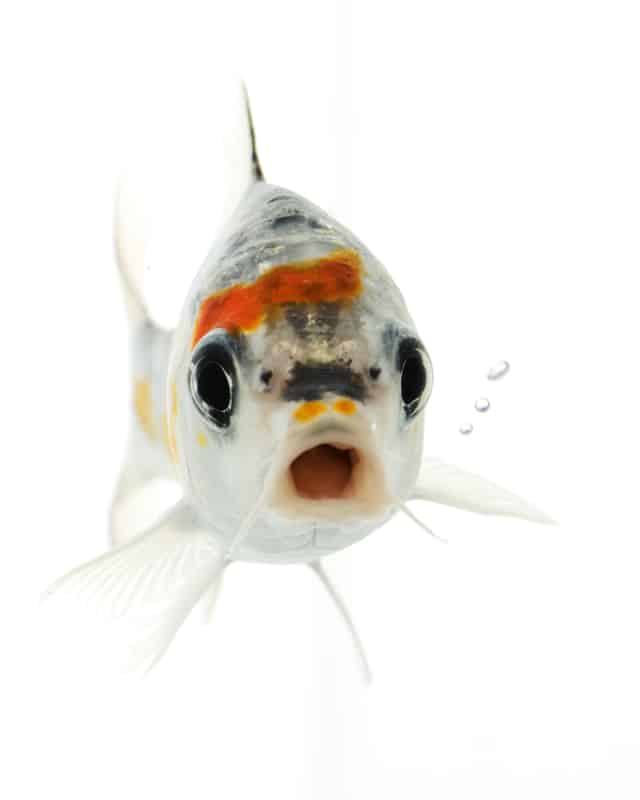
Together with the pond depth, a few other factors might impede the growth of your koi. Here are six possibilities:
- The pond has poor water quality and can cause stress in your school of koi. Apart from the health risks, the inferior quality of the water can negatively impact their growth. Oxygen can be added to your water by including more water features or an air pump.
- Regulating the water temperature is also highly crucial. Warmer water increases the koi’s metabolism and makes the fish grow faster. If the water is too warm, it results in illness and stress. When the water gets icy, the koi’s metabolism slows down drastically, and they go into hibernation when they rarely eat and hardly grow. The perfect temperature for a pond is between 65 – 75 °F.
- And, of course, if there is no room to grow, the koi will not develop. Overcrowding creates a hostile environment placing unnecessary pressure on your koi.
- The size of your pond, including the depth of your pond, has an immediate effect on several things. The smaller the pond, the less territory the koi have to move around. The koi require space to build muscle which leads to growth. It’s more difficult to control temperature and water quality as well.
- To grow healthy without any sickness, they require a well-balanced diet. Low-quality food might be cheaper but will cause stress and illness and ultimately prevent growth.
- Lastly, there is the aspect of genetics that permits some koi to grow plentiful and others to remain small in size. Unfortunately, there isn’t much you can do about this factor.
What Are The Best Water Conditions For A Koi Pond?
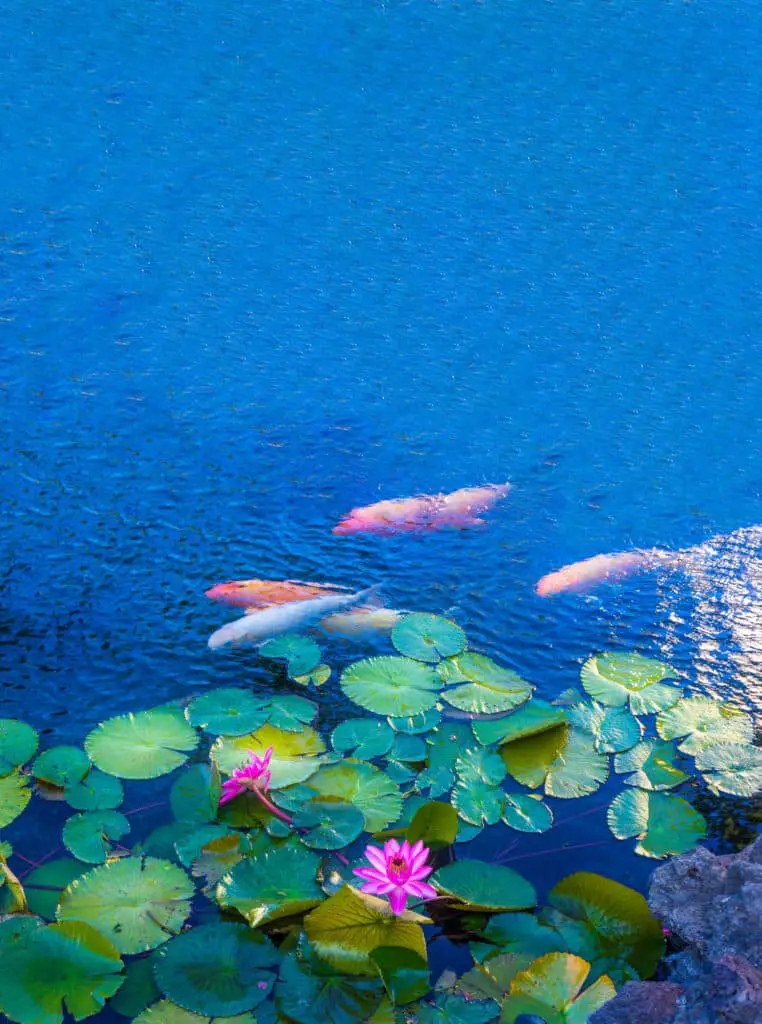
The koi family is a freshwater fish that enjoys space to swim. Your koi pond should be deep enough and hold enough water with the number of koi fish you have. They can grow quite large, and you should not underestimate your pond size when planning your construction.
The koi thrive in temperatures between 59 – 77 °F but can survive frosty conditions. During the icy winter months, they will hibernate and remain slightly active at the bottom of the pond, provided that the pond is deep enough that the whole pond doesn’t freeze.
Can Koi Fish Survive In A Frozen Pond?
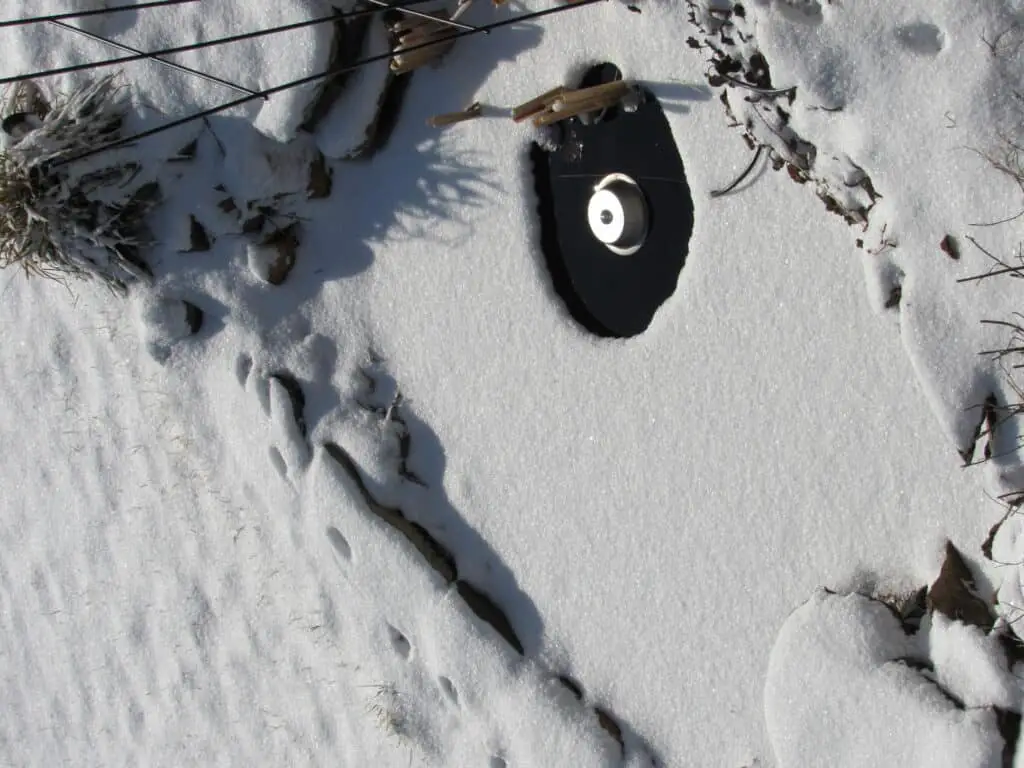
Koi fish are one of the most resilient species in nature. They have superb immune systems and can endure a range of water conditions, including an icy winter. The contingent on your pond is deep enough for only the top layer to freeze over to hibernate below the surface. Scientists believe it’s fundamental to a koi’s life cycle to experience a period of minimal activity in lower temperatures.
During a frozen winter, you will need to make a small hole in the ice for aeration and provide oxygen to the water below the ice. Because of the irregular shape of a koi pond, the water won’t freeze completely. If you would rather not see your koi overwinter the outdoors, you can temporarily move them indoors to a heated pond. Either way proves to disrupt the koi’s life.
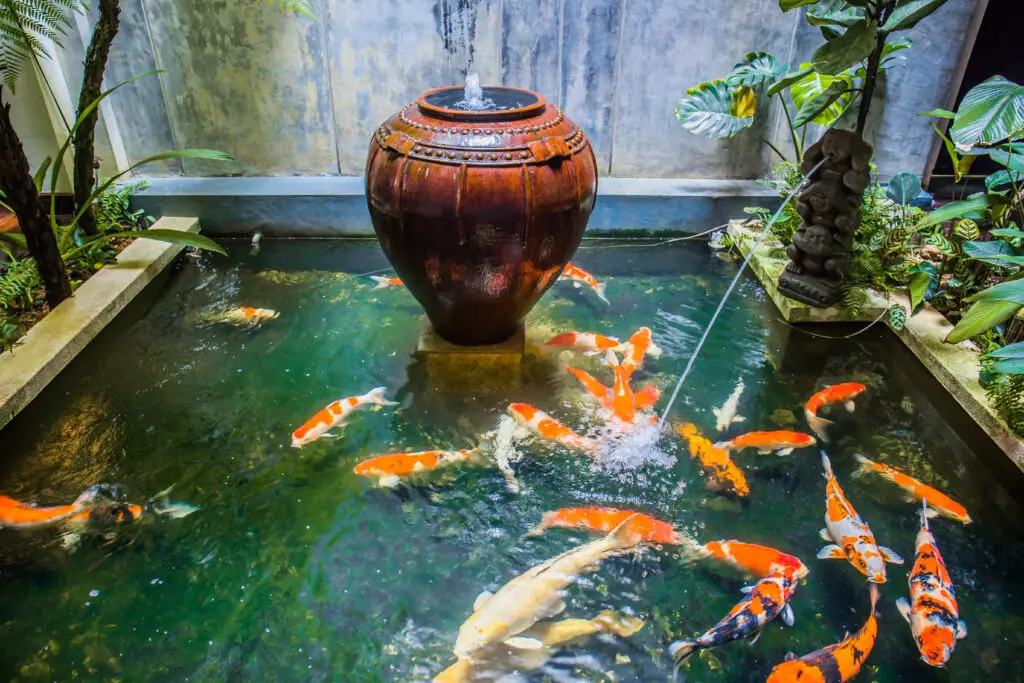
How To Build A Koi Pond?
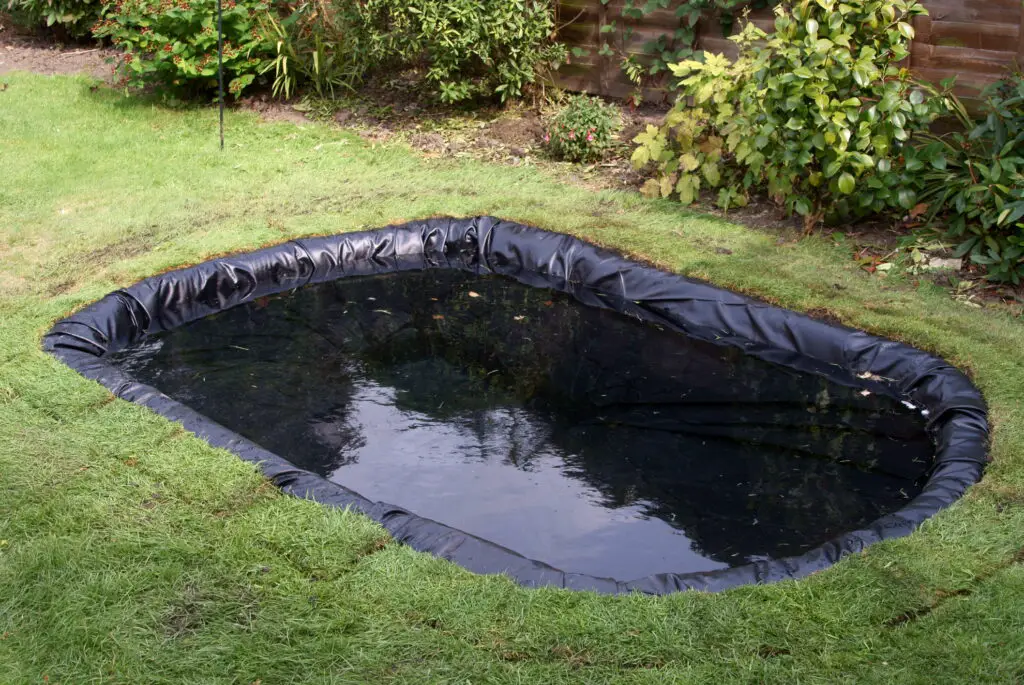
Building your koi pond involves more than digging a hole and filling it with water and fish. A koi aquarium involves meticulous planning and calculating to incorporate all the different aspects to ensure that your koi fish survive in their new home.
- Firstly, you will need to pick a suitable spot to build your pond. Too much sun will allow algae to flourish and the water to become too hot for the fish. Best to pick a place in the sun with partial shade coverage during the day.
- Calculating your intended pond’s size might depend on how extensive the property is and where you will fit the koi pond on the estate. Koi tends to become quite sizable, and you need to take that into account when measuring the volume of water that will go into your pond.
- There needs to be some circulation in the pond. A prominent feature like a rock formation arranged in a waterfall will maintain movement in the water and ensure enough oxygen and circulation of bacteria the koi require to stay healthy.
- Line the contour of the dug hole with a material like rubber or polyethylene to avoid the water of the pond seeping back into the earth. The liner needs to flow at least a foot over the pond’s edge.
- Install a water pump near the bottom of the pond strong enough to circulate the whole water volume at least once every hour.
- The most important aspect is the filter which will control the water’s freshness and clarity. The filter removes debris and waste from the water and converts the ammonia produced by the fish into nitrates, making it harmless to the koi.
- Decorate your pond with smooth, round-shaped rocks around the whole pond.
- After ensuring that the pond retains the water and there are no leaks, fill it with fresh water.
- Now you can add your plants if you wish. The plants serve as an additional food source for the omnivore koi fish and absorb the nitrates in the water.
- After waiting the appropriate time, you may add your koi fish to their new home. Be sure to wait until the water has had time to circulate adequately. This may take from 72 hours up until a few weeks for the water conditions to level out.
Should You Have Plants In Your Koi Pond?
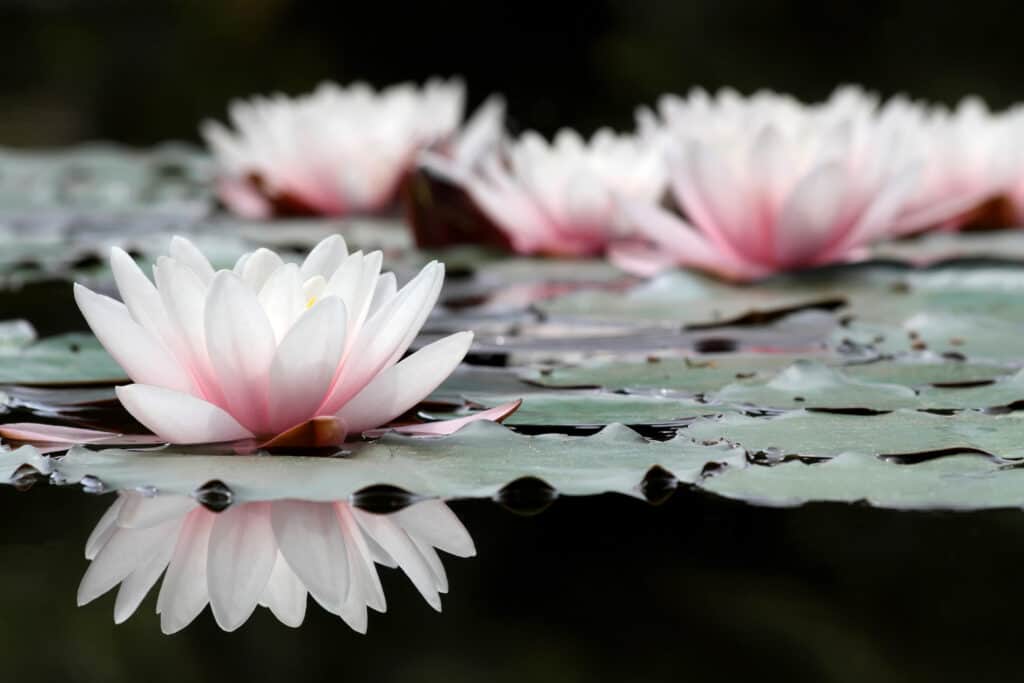
Aquatic plants can be very beneficial to your koi pond. Among the main reasons are the following three:
- They provide shelter and shade in the hot months. They also lend a protected surface where the female koi can secure their fertilized eggs in the spring.
- Different plants are used to oxygenate and filter the water from harmful gasses and create a healthier environment for the koi.
- Plants support the pond’s ecology and provide a refreshing aesthetic to the overall final design of the aquatic ecosystem.
What Types Of Koi Ponds Can You Build?
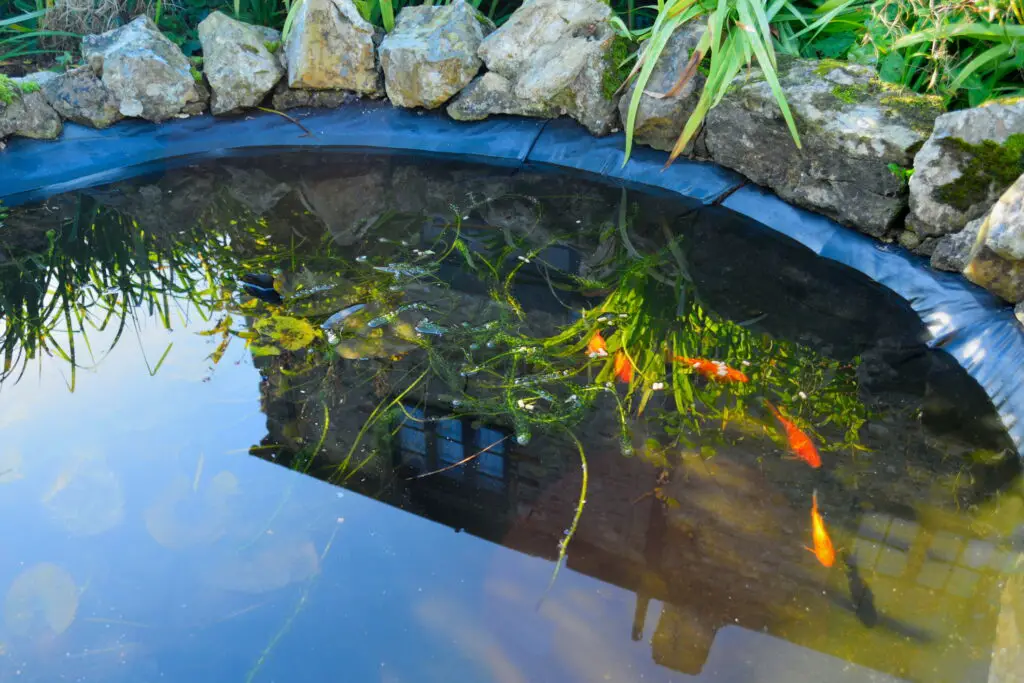
Choosing the materials to build your koi pond depends on how you plan to use your pond. Whether it’s an indoor pond, an outdoor pond, built above ground, or partially underground, the pond’s location will dictate the best materials. If it’s a deeper or shallow pond, koi ponds can be constructed using timber, earth, or concrete and finished off with a suitable liner.
Can You Swim In Your Koi Pond?
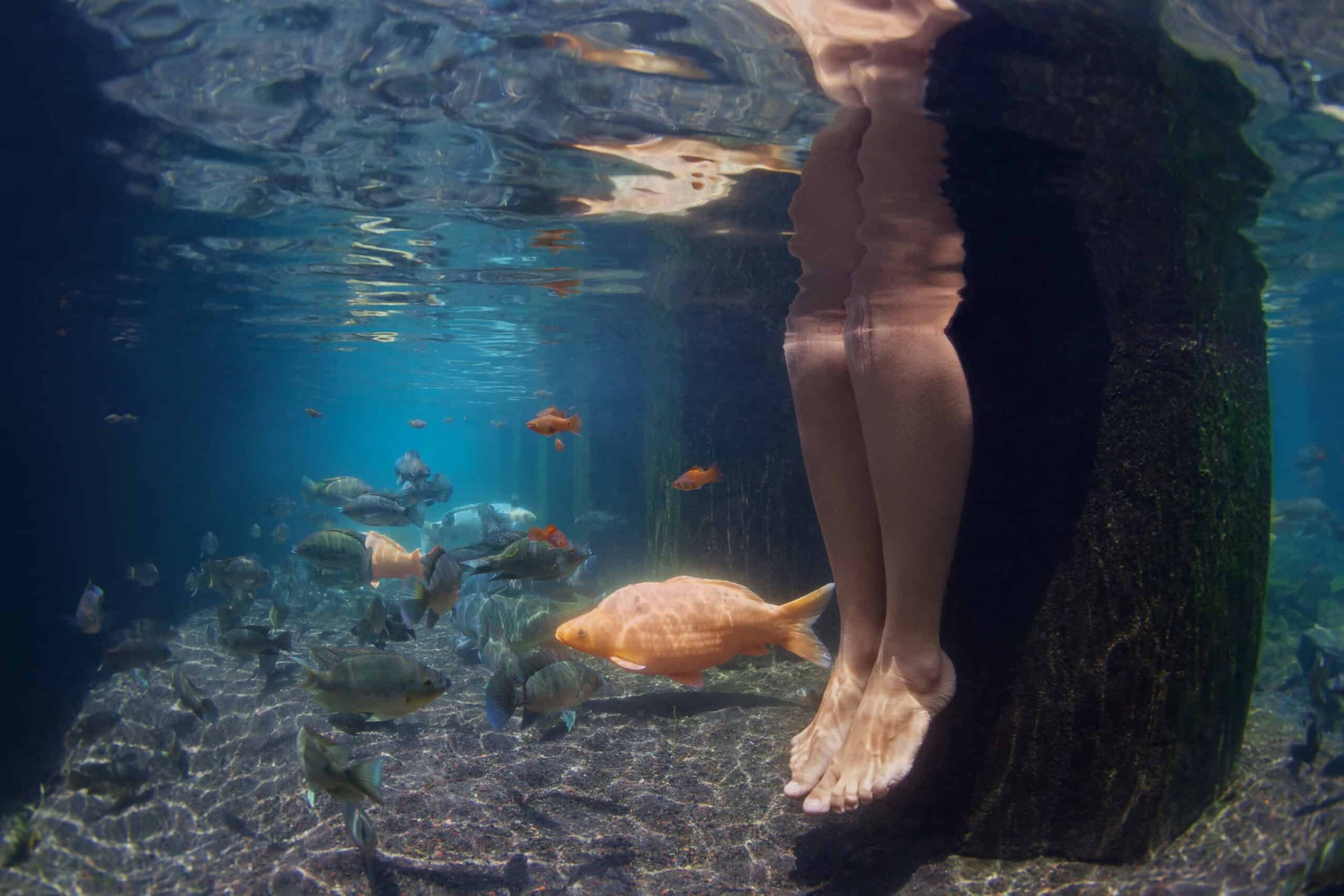
The question really isn’t if you can swim in your koi pond, but if you should. Yes, some people enjoy the interaction with these beautiful fish, and the water features make it an oasis in your garden, but what will your swimming do to their ecosystem?
It boils down to if you wish to invade their natural habitat and ultimately disturb their ecosystem. And having a life-size human in their environment might place unnecessary stress on these creatures. Not to mention that you will expose yourself to alien bacteria not commonly found in a swimming pool.
What Can Contaminate The Pond For Humans?
By swimming in your koi pond, you risk contaminating the aquatic ecosystem and considering that it’s safe enough to swim in. There are a few contaminants that could affect the health of your pond for you and the koi.
- Human and animal waste are tremendous contributors. Birds flocking around your pond could leave fecal matter, which contains unsafe bacteria for you and the fish. Your koi pond could also fall victim to human waste without proper and regular pond maintenance.
- Although we would not choose to keep such creatures, your pond could become the home of diverse dangerous animals. Snakes, snapping turtles, leaches, and even alligators might move in without a formal invitation. To avoid these specimens is, to avoid swimming in your pond altogether.
- Regular inhabitants in ponds and lakes are microscopic parasites that transfer during their life cycle between snails, waterfowl, and other typical mammals. Occasionally they latch on to human hosts and create an annoying rash commonly known as swimmers itch.
- Where ponds have an overabundance of nutrients, the water might be susceptible to a vast growth of algae. Generally, these algae cells are harmless to people, but in some cases, they can cultivate microcystin, a toxin that can damage the human liver, kidney, and reproductive functions. Microcystin is also very irritating to your skin, eyes, and throat.
- Planktonic algae appear like a green floating mass on the pond’s surface and are visually discouraging. Apart from the water simply looking dirty, it could hide hazardous obstacles like sharp rocks and heavy vegetation at the bottom you could become entangled in. This drifting green coating is also a sign of too many nutrients.
Conclusion
As it turns out, the depth of the koi pond actually connects to so many aspects of the well-being of the koi. The total body of water in your pond and the overall size of the pond impact the water quality. All the factors affect the growth of the fish and the general happiness of your koi. So plan carefully!
References
https://www.hartz.com/things-to-consider-before-starting-a-koi-fish-pond/
https://animals.mom.com/can-koi-live-pond-its-frozen-top-11492.html
https://www.hartz.com/habitat-needs-maintenance-outdoor-koi-pondfish/
https://www.sun-sentinel.com/entertainment/wsfl-koi-pond-create-htmlstory.html
https://www.thespruce.com/how-to-build-a-koi-pond-5116858
https://nextdaykoi.com/koi-how-tos/calculating-pond-water-volume/

